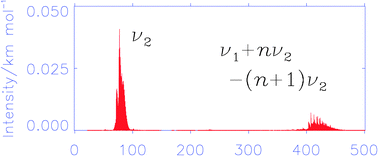The predicted spectrum of the hypermetallic molecule MgOMg
Abstract
The present study of MgOMg is a continuation of our theoretical work on Group 2 M2O hypermetallic

* Corresponding authors
a Institute of Chemistry, Technology and Metallurgy, University of Belgrade, Studentski trg 14-16, 11 000 Belgrade, Serbia
b Steacie Institute for Molecular Sciences, National Research Council of Canada, Ottawa, Ontario, Canada
c Centre for Theoretical Chemistry and Physics (CTCP), The New Zealand Institute for Advanced Study (NZIAS), Massey University Auckland, Private Bag 102904, North Shore City, 0745 Auckland, New Zealand
d
Physikalische und Theoretische Chemie, Bergische Universität, D-42097 Wuppertal, Germany
E-mail:
jensen@uni-wuppertal.de
Fax: +49 202 439 2509
Tel: +49 202 439 2468
The present study of MgOMg is a continuation of our theoretical work on Group 2 M2O hypermetallic

 Please wait while we load your content...
Something went wrong. Try again?
Please wait while we load your content...
Something went wrong. Try again?
B. Ostojić, P. R. Bunker, P. Schwerdtfeger, B. Assadollahzadeh and P. Jensen, Phys. Chem. Chem. Phys., 2011, 13, 7546 DOI: 10.1039/C0CP02996C
To request permission to reproduce material from this article, please go to the Copyright Clearance Center request page.
If you are an author contributing to an RSC publication, you do not need to request permission provided correct acknowledgement is given.
If you are the author of this article, you do not need to request permission to reproduce figures and diagrams provided correct acknowledgement is given. If you want to reproduce the whole article in a third-party publication (excluding your thesis/dissertation for which permission is not required) please go to the Copyright Clearance Center request page.
Read more about how to correctly acknowledge RSC content.
 Fetching data from CrossRef.
Fetching data from CrossRef.
This may take some time to load.
Loading related content
